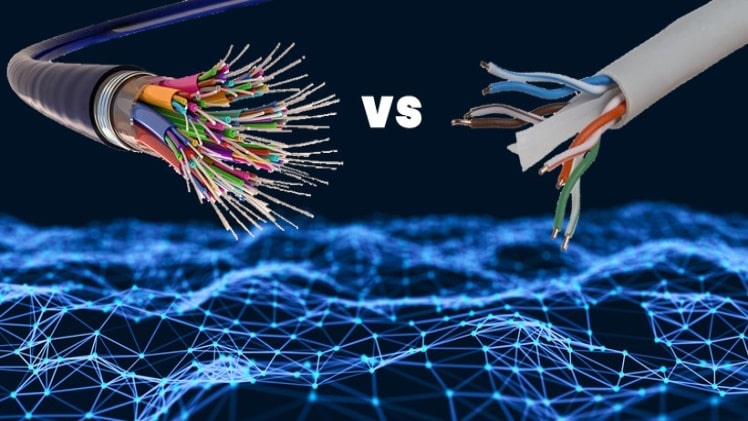Most people do not think about how the internet gets to their homes or offices or how the servers in their offices are connected. However, anyone building data infrastructure has to think about the types of cables they will use. Copper has remained the connection type of choice for decades, but it is being replaced by fiber because it has numerous benefits over fiber. Here are just some of them.
Faster Data Transmission Speeds
Data transmission speeds are measured using bandwidth. With increasing internet and data connectivity demand, we now measure transmission speeds in gigabits and terabits per second. Fiber optic cables carry data at or very close to the speed of light, ensuring faster internet speeds than copper cables which are capped at 40 gigabits per second.
In business applications, especially with connections between servers and between servers and end users, we want much faster speeds due to the need to share and access massive amounts of data. Their faster transmission speeds make fiber optic cables the best option for these applications.
They Are Less Likely to Suffer Signal Loss
Signal loss leads to loss of data which, in turn, leads to slower connection speeds. Fiber optic cables have three components: the core, the cladding, and the coating. The cladding surrounds the fiber optic cable, reflecting the light transmitted to ensure it does not escape. The cladding makes fiber optic cables less susceptible to signal loss, leading to superior performance.
Because they transmit light instead of electric pulses, fiber optic cables are less likely to suffer from interference that occurs as electricity passes through a cable. This interference can bleed into nearby cables when using copper cables, amplifying the effect, and leading to poor connectivity. This type of interference does not happen in fiber optic cables because each is an enclosed system, with the cladding discussed above protecting the transmission from outside interference.
Fiber Optic Cables Can Cover Longer Distances
Copper cables are typically limited to lengths of 330 feet or 100 meters. While longer distances are possible, especially with better cladding, they introduce additional problems that engineers, installers, and IT personnel have to deal with.
A fiber optic cable can transmit data over much longer distances with little attenuation (weakening of the signal). These cables require repeaters along their length to keep the signal strong, and these distances are vast. Repeaters are typically placed over 100 miles apart, but this is not required if they are run for comparably short distances, such as in data centers.
They Are Future-proof
As the demand for data access increases, businesses will have to replace their cables to keep up. Fiber optic cables are future-proof because they can keep up with today’s data demands. Today’s fiber optic installations will keep up for decades or until our data transmission demands require a more robust solution.
While the right data transmission medium depends on need, fiber optic cables remain the best solution for today’s data transmission needs. Faster speeds, less susceptibility to data loss and interference, and the ability to keep up with future demands are some reasons you should consider them for your tishare projects.
